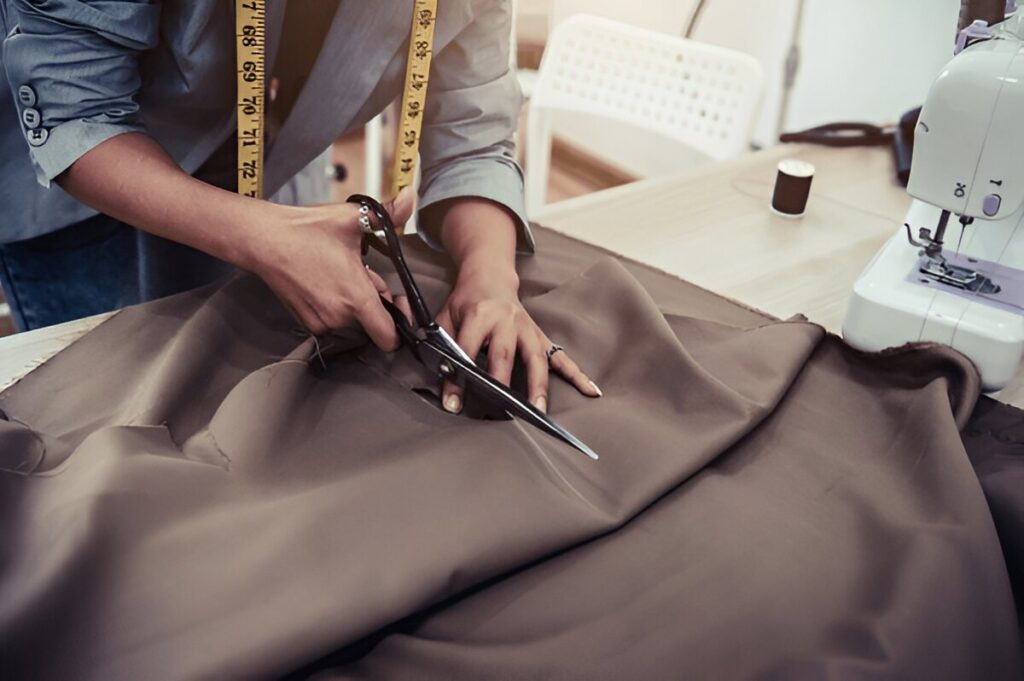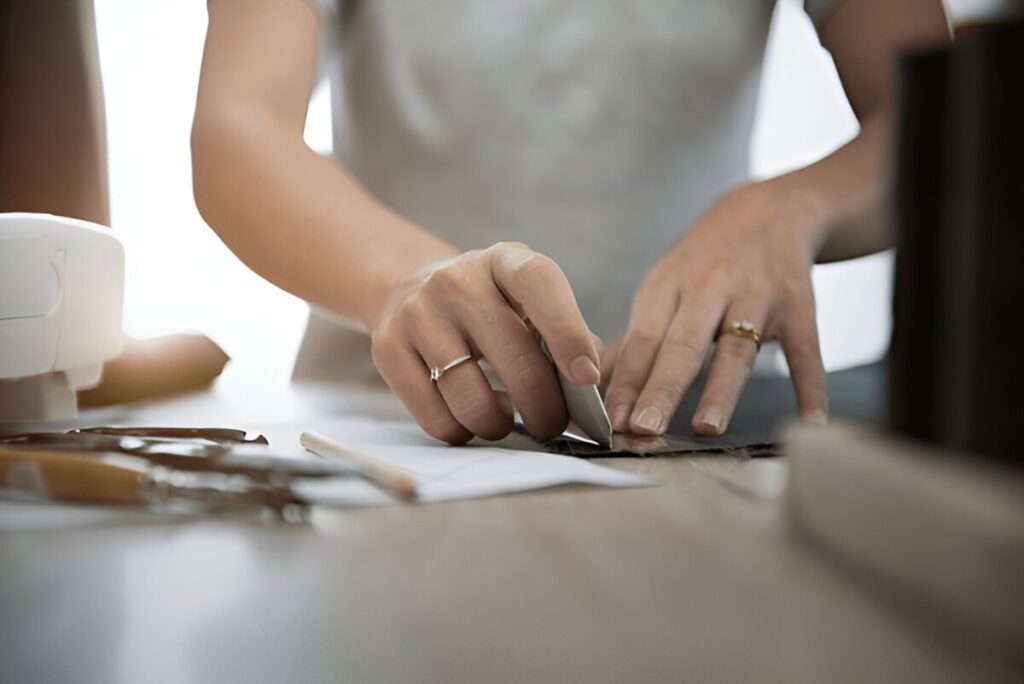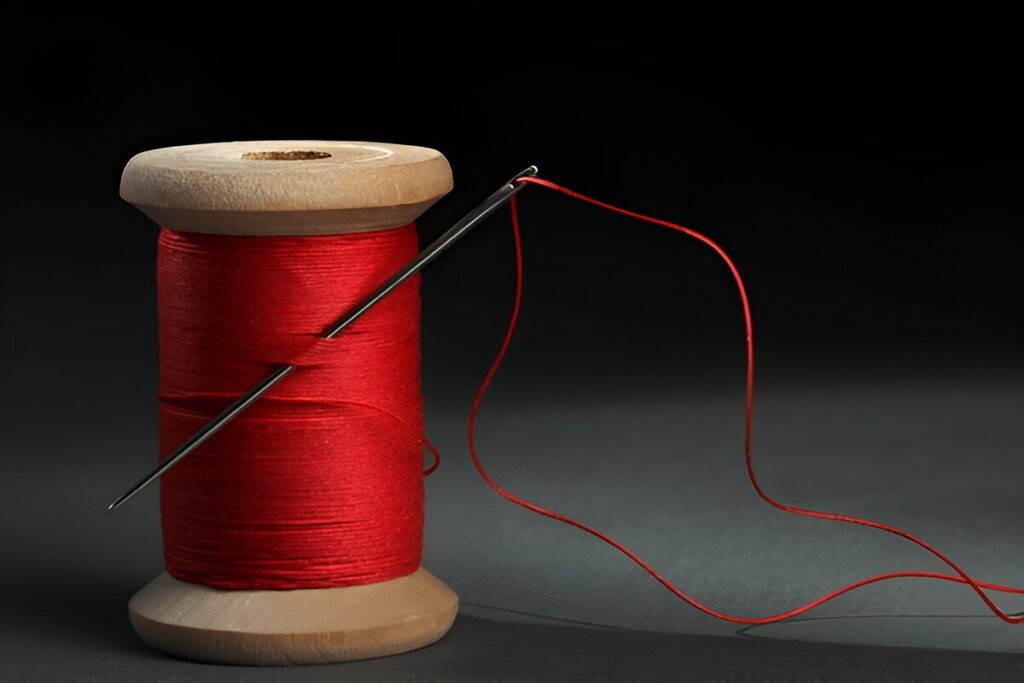Whether you’re fixing a hem, stitching up a dress, or working on a full outfit from scratch, you need the right set of tools in hand. Clothes don’t make themselves—behind every well-fitted shirt or flowing gown is a kit of sewing tools and their uses. Knowing what hand tools does clothes use, and how to use them safely, helps you save time, reduce mistakes, and prevent fabric from getting damaged.
In this guide, we’ll walk through the handy tools used in sewing, tailoring, and dressmaking. We’ll also look at hand tools safety, explain how to choose the right cutting tools, and list the main raw materials for making clothes. By the end, you’ll know what to keep in your sewing kit and how each item plays a role in building garments that fit right and last long.
10 Sewing Tools and Their Uses
Start with the basics. These ten tools for sewing and their uses will set the foundation for any small or large project.
1. Fabric Scissors
Fabric scissors are sharp and designed only to cut fabric cleanly. Never use them on paper or anything else—it dulls the blades fast. Good scissors glide through delicate fabrics without snagging or pulling.

2. Rotary Cutters
Perfect for long, straight cuts, rotary cutters are essential for quilting or cutting multiple layers. They roll instead of slice, which makes them great for soft or slippery materials.
3. Seam Rippers
Made with a sharp point, seam rippers let you undo stitches without tearing the fabric. One of the most-used hand tools, it’s your best friend when fixing mistakes.
4. Tape Measures
A flexible tape measure helps you take accurate body measurements and check the size of each pattern piece. Always keep one in your kit—it’s a must for getting a good fit on garments.
5. Tailor’s Chalk
Tailor’s chalk marks lines on fabric that brush off easily. It helps you trace patterns and sew along a straight line without guessing. It’s simple, but highly useful.

6. Marking Tools
Besides chalk, marking tools include pens, pencils, and erasable markers. Some disappear with heat or water. Use them to mark darts, notches, or button placements on delicate fabrics without leaving stains.
7. Pins and Pin Cushions
Pins hold fabric together before sewing, especially around curves and seams. A pin cushion keeps them handy and stops them from ending up on the floor—stepping on one isn’t fun.
8. Iron and Ironing Board
Pressing seams open or flattening hems makes a big difference in how your clothes look. Use an ironing board and steam iron to keep things sharp and smooth.
9. Thimbles
When hand sewing, a thimble protects your finger while pushing the needle through thick layers. It’s one of those old-school sewing tools that still works just as well today.
10. Needles and Thread
No list of sewing tools is complete without hand or machine needles and a wide range of threads. Thinner needles are better for delicate fabrics, while thicker ones suit denim and canvas.

Tailoring Tools and Their Uses
Tailoring tools and their uses go beyond home sewing. Tailors rely on professional-grade equipment that focuses on precision and durability.
- Clapper – Helps flatten seams with steam, locking the shape.
- Point presser – Used for pressing hard-to-reach corners.
- Pattern notcher – Cuts notches into pattern edges for accurate matching.
- L-square ruler – Ensures accuracy in drafting, especially 90° angles.
Tailors also often work with custom pattern pieces, adjusting them to match measurements taken with measuring tools like specialized rulers and curved templates.
What Are the Tools for Sewing Clothes?
So, what tools do you need to make your own clothes? The full list depends on what you’re making, but here’s a practical sewing tools list that covers most sewing projects:
- Fabric scissors
- Rotary cutters
- Tape measures
- Seam rippers
- Tailor’s chalk
- Marking tools
- Pins & pin cushions
- Sewing needles & machine needles
- Thread spools
- Thimbles
- Measuring gauges
- Pattern weights
- Loop turners
- Bodkin
- Iron and ironing board
What Are the Main Raw Materials for Making Clothes?
The main raw materials for making clothes fall into two categories: natural and synthetic. Here’s a short breakdown:
Natural Fibers
- Cotton – Breathable and soft; used in shirts, pants, and dresses.
- Linen – Great for warm climates; crisp texture.
- Wool – Holds heat well; ideal for coats and suits.
- Silk – Smooth and shiny; used for luxury garments.
Synthetic Fibers
- Polyester – Durable and wrinkle-resistant.
- Nylon – Stretchy and strong; used in activewear.
- Acrylic – Lightweight and warm.
- Rayon – Semi-synthetic, made from wood pulp, often used in blends.
Each fabric reacts differently to heat, moisture, and tension, so you’ll need the right cutting tools and measuring tools to handle them without damaging the material.
Safety on Hand Tools
Safety on hand tools is often overlooked in sewing, but it’s just as vital here as in construction or metalwork.
Basic Hand Tools Safety Tips:
- Always cut away from your body with fabric scissors and rotary cutters.
- Keep sharp points like seam rippers and pins capped or stored safely.
- Don’t leave needles or tools on your chair or floor.
- Use a proper ironing board instead of a random surface to avoid burns.
- Replace damaged or dull tools before they cause injury or ruin fabric.
Even the most experienced sewers follow hand tools safety rules. Accidents happen quickly, and your hands are your most important tools.
Fashion Tools Names Worth Knowing
Whether you’re in school, working as a tailor, or just love making clothes at home, these fashion tools names are good to know:
- Bias tape maker
- Buttonhole cutter
- Seam gauge
- Tailor’s ham
- French curve
- Thread snips
- Fabric glue
- Loop turner
- Needle threader
- Sleeve roll
These might not be needed in every sewing kit, but when a project calls for them, nothing else will do the job quite the same.
What Equipment Is Used to Make Clothes?
If you’re wondering, what equipment is used to make clothes in general—it varies from home setups to industrial machines. At home, a simple setup might include:
- Sewing machine
- Iron
- Measuring tape
- Rotary cutters or scissors
- Seam rippers, pins, and chalk
In a professional setup, you’ll also find:
- Cutting tables
- Overlock and serger machines
- Steam presses
- Dress forms
- Pattern drafting tables
But no matter the scale, the core remains the same: tools in hand, sharp minds, and careful hands.
What Tools Do You Need to Make Your Own Clothes?
To wrap it up, if you’re asking what tools do you need to make your own clothes, the answer depends on how detailed you want to go. But for most sewing projects, you’ll need:
- A good pair of fabric scissors
- Measuring tape and chalk for a straight line
- A reliable sewing machine
- Sharp cutting tools like a rotary cutter
- Seam rippers for fixing things
- A flat surface like an ironing board for finishing touches
- And a few marking tools to guide your stitch lines
Sewing is part skill, part patience, and a lot of preparation. With the right sewing tools, solid hand tools safety habits, and an understanding of how materials react, you can create clothes that fit well and last long. Every piece of equipment—from the smallest thimble to your main pair of fabric scissors—serves a purpose.
Ready for More?
If you’re interested in learning more about sewing, materials, or how to choose professional gear, check out Industrial Tools Hub. From tool guides to expert insights, it’s where smart makers go to get their hands on the right information. For more tips on cutting tools, precision instruments, or anything tool-related, visit https://industrial-tools-hub.com/.
